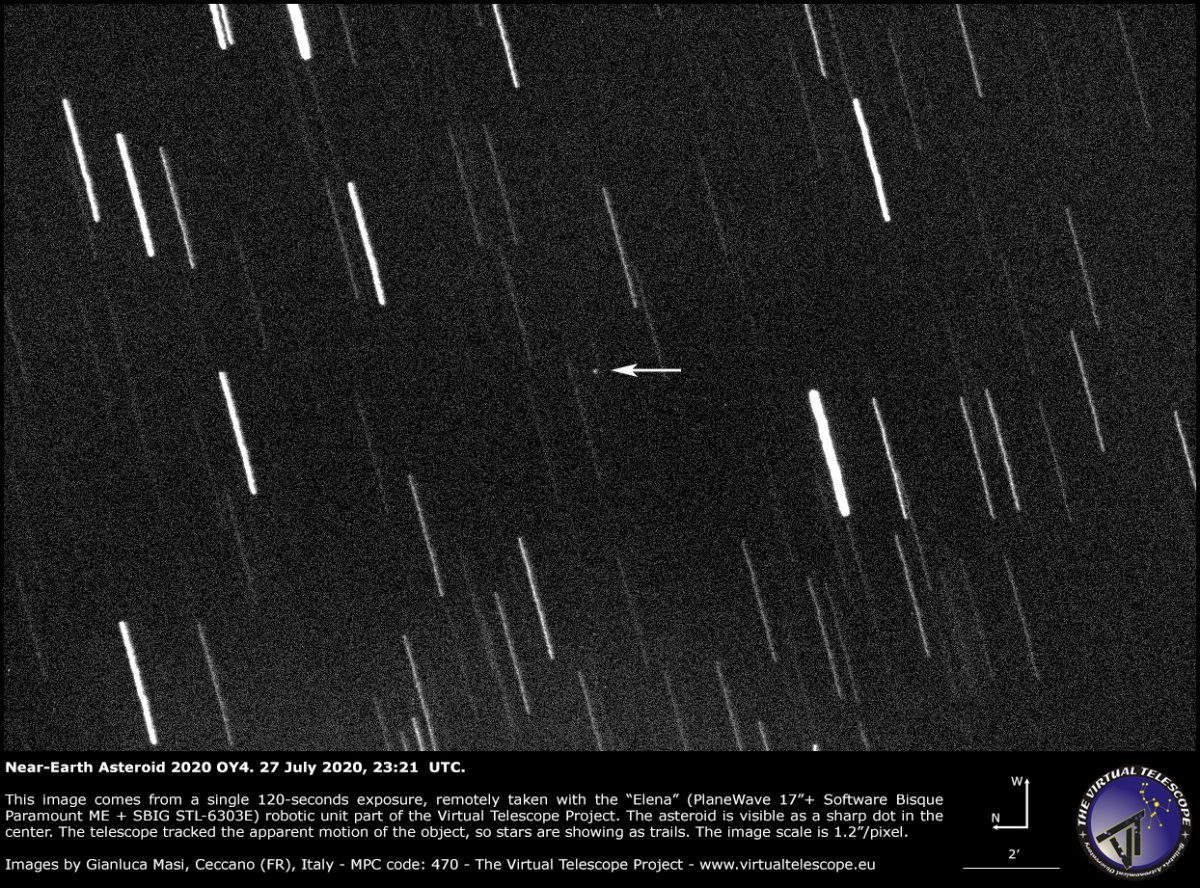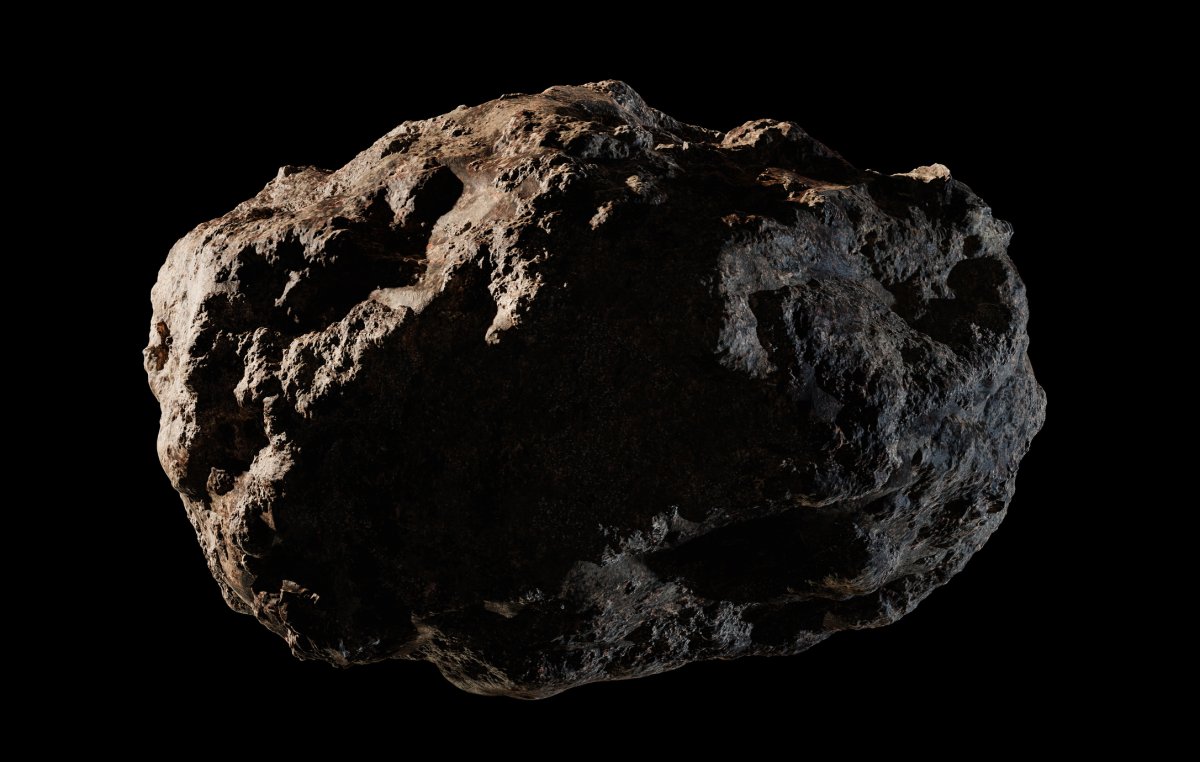Early this morning, a small asteroid passed "extremely close" to Earth—and an astronomer managed to capture a picture of the object as it approached our planet.
The space rock, dubbed 2020 OY4, made its closest approach to our planet at 5:32 a.m. UTC (1:32 a.m. EDT) on July 28, when it was located "just" 0.00028 astronomical units—or around 26,000 miles—away from Earth, according to NASA's Center for Near Earth Object Studies (CNEOS.)
This is extremely close in astronomical terms, and just 11 percent of the average distance between the Earth and moon.
In fact, data from the CNEOS—which tracks so-called near-Earth objects (NEOs)—suggests that the close approach of 2020 OY4 was the closest that any NEO will come to our planet for the next year at least, if you measure by the "most-likely close-approach distance."
However, if you measure by the "minimum possible close-approach distance," one small object, dubbed 2018 VP1 may come even closer in November, potentially passing at an incredibly close distance of just over 4,700 miles, according to the CNEOS data.

Astronomer Gianluca Masi—founder of the Virtual Telescope Project (VTP )—snapped a photo of 2020 OY4 on July 27 when it was located around 155,000 miles from us or, about two-thirds of the Earth-moon distance.
Using one of the VTP's robotic, remotely-operated telescopes known as "Elena," Masi took a single, 120-second-long exposure, in which the asteroid can be seen in the middle as a tiny, bright white dot.
The numerous white streaks in the image are stars, which appear like trails because Elena was tracking the asteroid as it moved at high speeds—around 27,700 miles per hour relative to the Earth.

The asteroid, which measures between 2.3 to 5.2 meters (7.5 to 17 feet) across, was only discovered on July 26, 2020 during an astronomical survey conducted by the Mount Lemmon Observatory, which is located at an altitude of around 9,100 feet in the Santa Catalina Mountains northeast of Tucson, Arizona.
Despite 2020 OY4's close approach, there was no chance that the asteroid would end up colliding with Earth. And even if it had, NEOs of this size almost always burn up as they enter the atmosphere, meaning they pose little risk.
2020 OY4 is classified as an NEO, a term that refers to any asteroid or comet whose trajectory takes it within 30 million miles of Earth's orbit.
Uncommon Knowledge
Newsweek is committed to challenging conventional wisdom and finding connections in the search for common ground.
Newsweek is committed to challenging conventional wisdom and finding connections in the search for common ground.
About the writer
Aristos is a Newsweek science reporter with the London, U.K., bureau. He reports on science and health topics, including; animal, ... Read more
To read how Newsweek uses AI as a newsroom tool, Click here.








